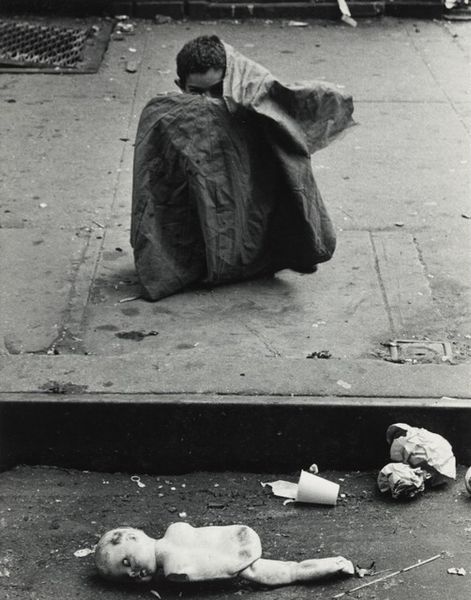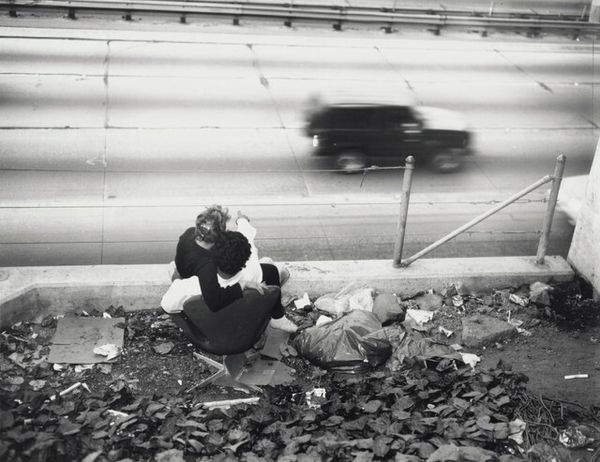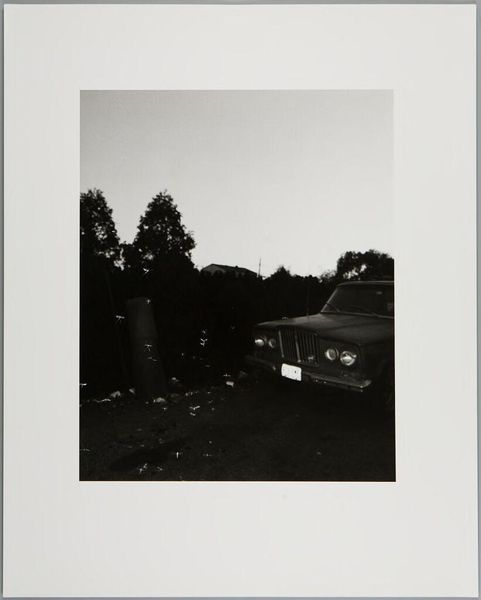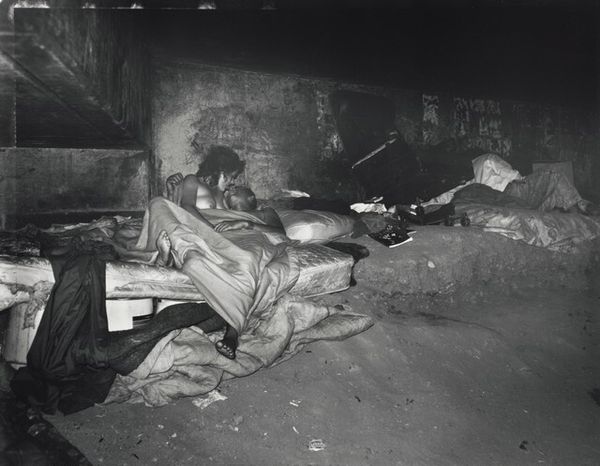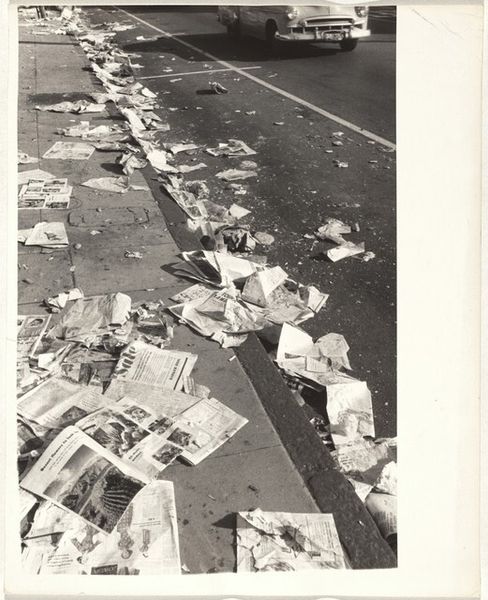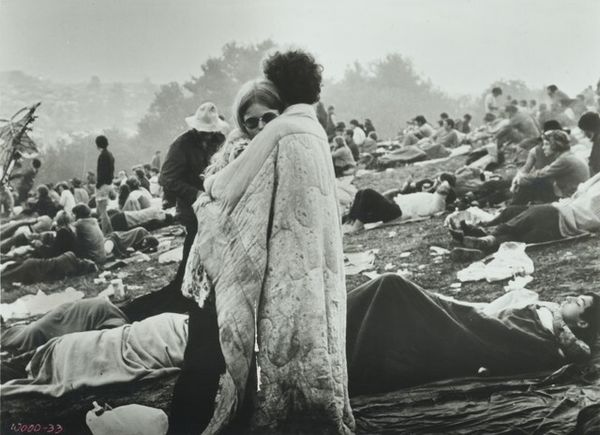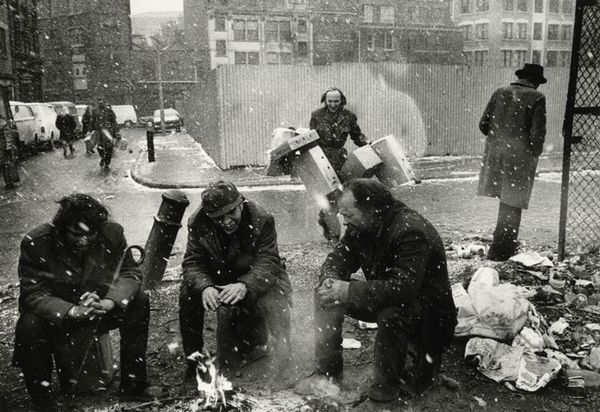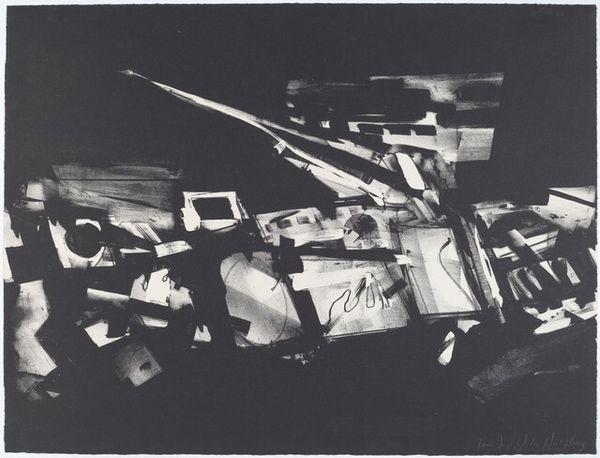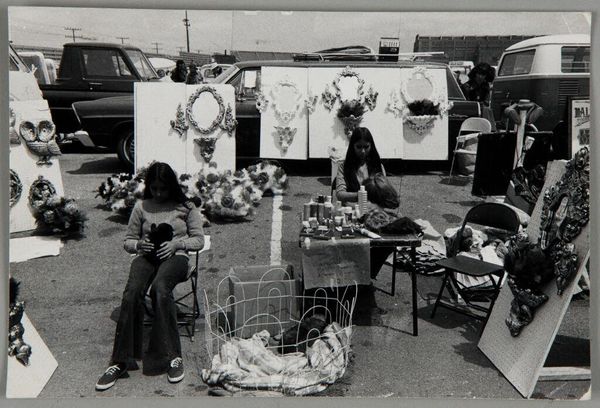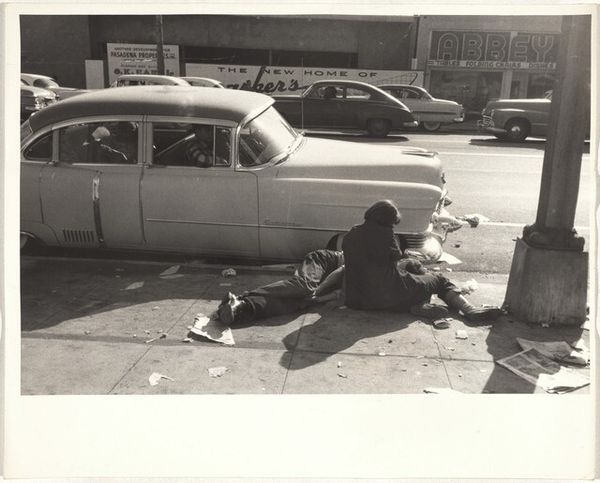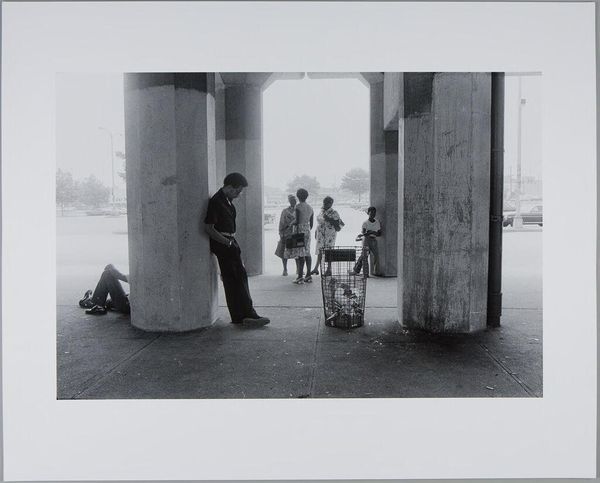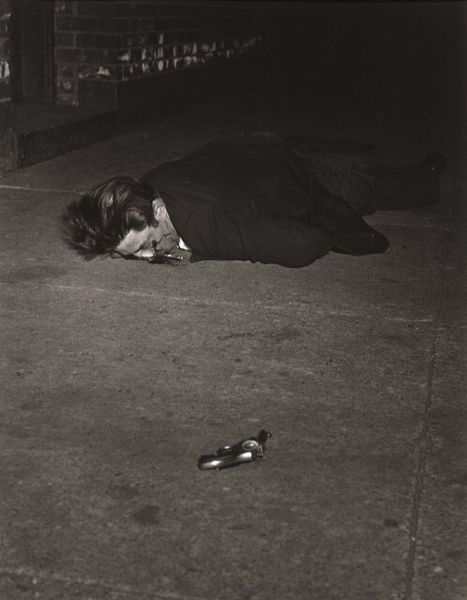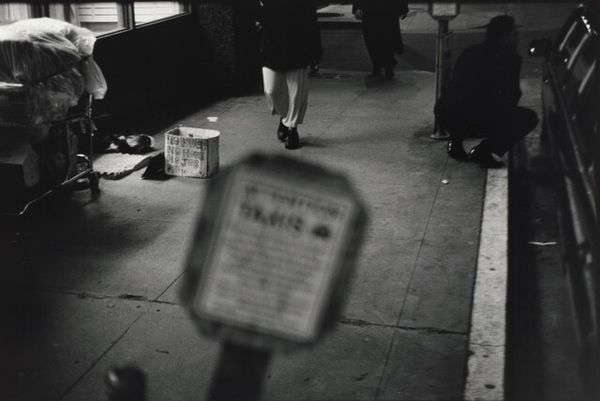
photography, gelatin-silver-print
#
style photography
#
still-life-photography
#
archive photography
#
street-photography
#
photography
#
black and white
#
gelatin-silver-print
#
monochrome photography
#
monochrome
#
realism
Dimensions: sheet: 27.8 × 35.2 cm (10 15/16 × 13 7/8 in.) image: 25.3 × 32.4 cm (9 15/16 × 12 3/4 in.)
Copyright: National Gallery of Art: CC0 1.0
Curator: Jim Goldberg's "Street Map (#11)," possibly from between 1989 and 1994, presents us with a striking gelatin-silver print. Editor: My first reaction is... visceral. The composition is a kind of organized chaos—gritty, unflinching. The stark black and white palette only heightens the feeling of bleakness. Curator: Absolutely. The gelatin-silver print process allows for that rich tonality, emphasizing the textures of the discarded objects. It looks to me like evidence of discarded material, food remnants, highlighting the casual disposability prevalent within consumer culture. Editor: Precisely. Notice how Goldberg uses shallow depth of field. It brings a select few elements into sharp focus while letting the background fade, drawing our eye to specific areas and building compositional layers. That contrast of sharp and soft contributes so much to the overall reading. Curator: And think about what those specific elements *are*: A mustard jar, beer can, plastic cutlery. Mundane, everyday objects rendered almost grotesque through their discarded state. It seems like a statement on late-stage capitalism, the production of waste. I wonder about the implied figures barely discernible in the background. Their relationship to the objects at hand remains unclear yet weighted. Editor: The repetition of form too—look at the repeated circular motif, from the jar label to the can—suggests not only waste but a cycle, perhaps even futility. Consider also the play of light and shadow. It gives three dimensionality but also weight. It imbues even trash with sculptural qualities. Curator: Right, and that elevated aesthetic treatment complicates things. Is it romanticizing poverty? Or is it forcing us to confront something we'd rather ignore, transforming labor and social issues into something formally engaging, and hopefully sparking self reflection? Editor: That’s the real tension here. It’s a visual puzzle, demanding we consider not only what we see, but *how* we see it, how those structures in front inform social systems elsewhere. Curator: It leaves me feeling uneasy but ultimately provoked. Editor: Agreed. There is definitely a resonating complexity long after you turn away.
Comments
No comments
Be the first to comment and join the conversation on the ultimate creative platform.
